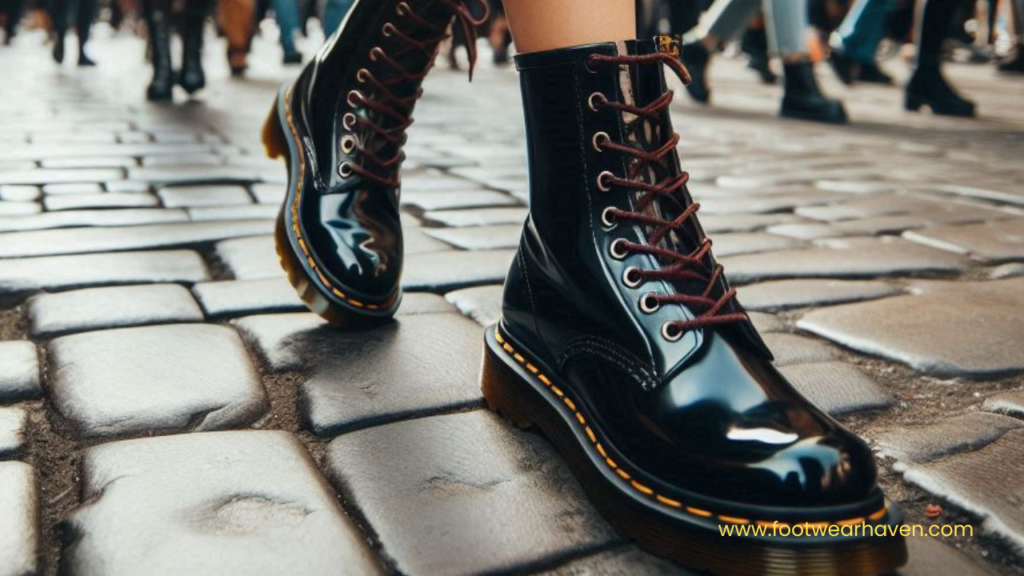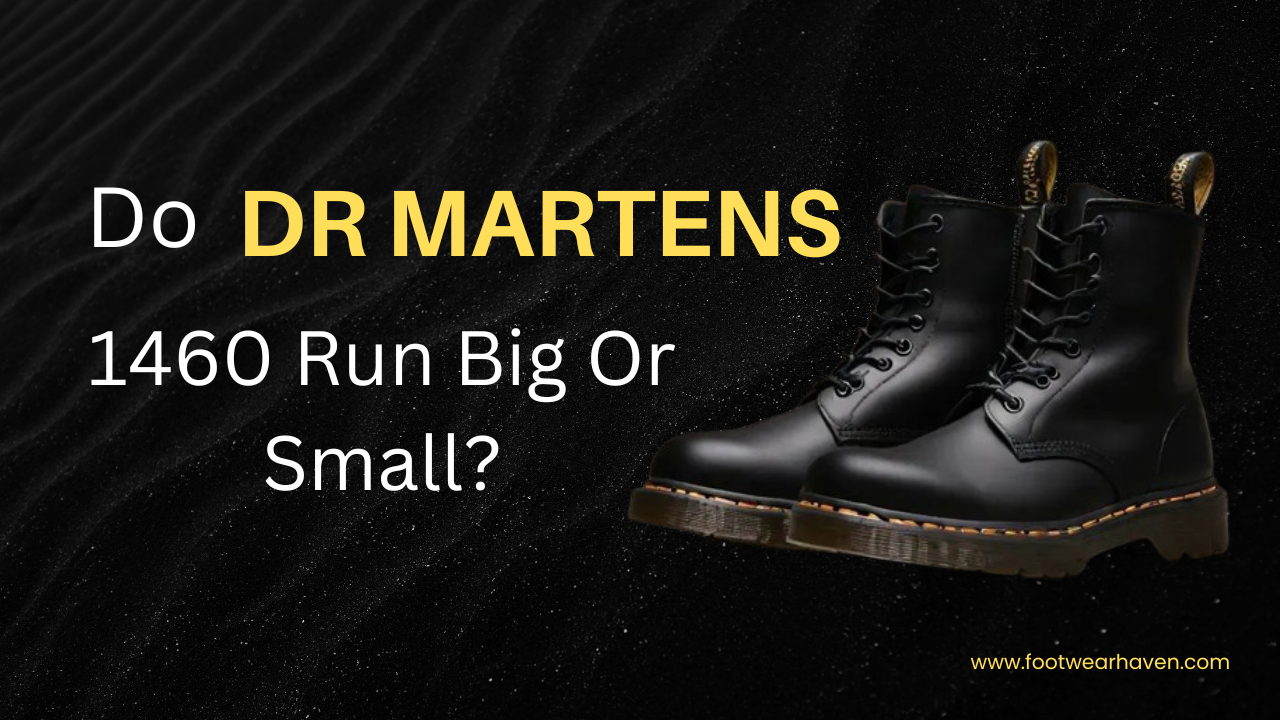When you’re investing in a pair of iconic boots, one of the first questions you’ll ask is, “Do Doc Martens 1460 run big or small?” This is a common concern because proper sizing can make or break the comfort of your boots. The short answer? Doc Martens 1460 boots generally run true to size, but they can feel snug at first due to their stiff leather. Don’t worry — this is completely normal, and with the right break-in process, they will mold perfectly to your feet.
In this guide, we’ll dive into sizing details, break-in tips, and expert advice to help you buy with confidence.
Table of Contents
ToggleWhy Proper Fit Matters for Doc Martens 1460
The Doc Martens 1460 is not just any boot — it’s a cultural icon worn by musicians, workers, and fashion enthusiasts worldwide. But because it’s made from durable leather, choosing the wrong size can lead to painful break-ins or loose, uncomfortable wear. A good fit ensures:
- Better support for your arches
- Less friction and blistering
- Longer-lasting boots
- All-day comfort once broken in
Understanding Doc Martens 1460 Sizing
Most wearers find that Doc Martens 1460 fit true to size, but there are a few things to know:
- Initial Snugness is Normal – The first few wears may feel tight across the top of your foot.
- Leather Will Stretch – Over time, the boots soften and conform to your foot shape.
- Half Sizes Can Be Tricky – If you’re between sizes, most people size down, since leather loosens up.
Do Doc Martens 1460 Run Big or Small

The short, honest answer is that Doc Martens 1460 boots do not usually run big or small — they are designed to fit true to size. However, because of the firm leather construction, many first-time buyers mistake the snug fit for being too small.
Key Takeaway:
If you normally wear a size 9 sneaker, stick with a size 9 in Doc Martens 1460. Just expect a short break-in period before they feel perfect.
Factors That Can Affect the Fit
1. Sock Choice
Thicker socks will make the boots feel tighter. During break-in, wear medium-weight socks to avoid too much pressure on your feet.
2. Foot Shape
If you have wide feet, the boots may feel narrow at first. Some customers choose to size up by half a size, but many prefer to let the leather stretch naturally.
3. Breaking-In Process
Breaking in Doc Martens 1460 is crucial. The leather softens, the boots loosen slightly, and the fit becomes more comfortable over time.
How to Break In Doc Martens 1460 Without Pain
To speed up the process and avoid blisters:
- Wear Them for Short Periods – Start with an hour or two per day.
- Use Thick Socks – This cushions your feet and helps stretch the leather.
- Condition the Leather – A good leather conditioner will soften the material.
- Flex the Boots by Hand – Gently bending the sole helps loosen it.
Are Doc Martens 1460 Comfortable After Break-In?
Yes! Once broken in, Doc Martens 1460 shoes become incredibly comfortable and last for years. Many wearers say they are some of the most durable and supportive boots they own.
How to Wear Doc Martens 1460 for Style & Comfort
Pairing these boots with the right outfits can enhance both comfort and appearance. For a casual look, wear them with jeans or leggings. If you want a more rugged style, try them with cargo pants or workwear.
Expert Recommendation
As someone who has helped dozens of customers choose their first pair of Doc Martens, I always recommend sticking to your regular size unless you have exceptionally wide feet. The leather will do its job and form to your foot over time — patience pays off with these boots.
People Also Interested In
Do Doc Martens 1460 Stretch Over Time?
Yes — the leather softens and stretches slightly, making them more comfortable with regular wear.
Should You Size Up or Down?
If you are between sizes, it’s often better to size down since the boots will loosen.
Can You Wear Them Right Out of the Box?
Technically yes, but wearing them for too long on day one can cause blisters. Break them in gradually.
Tips to Get the Perfect Fit
Measure your feet in the evening when they are slightly swollen.
Use the official Doc Martens size chart.
Consider removable insoles if you need extra cushioning or arch support.
Final Words
So, do Doc Martens 1460 run big or small? The answer is that they typically run true to size, but expect them to feel snug until the leather softens. With proper break-in, you’ll enjoy years of comfort and durability. Whether you’re wearing them for work, fashion, or everyday wear, getting the right size ensures you get the best out of these iconic boots.

